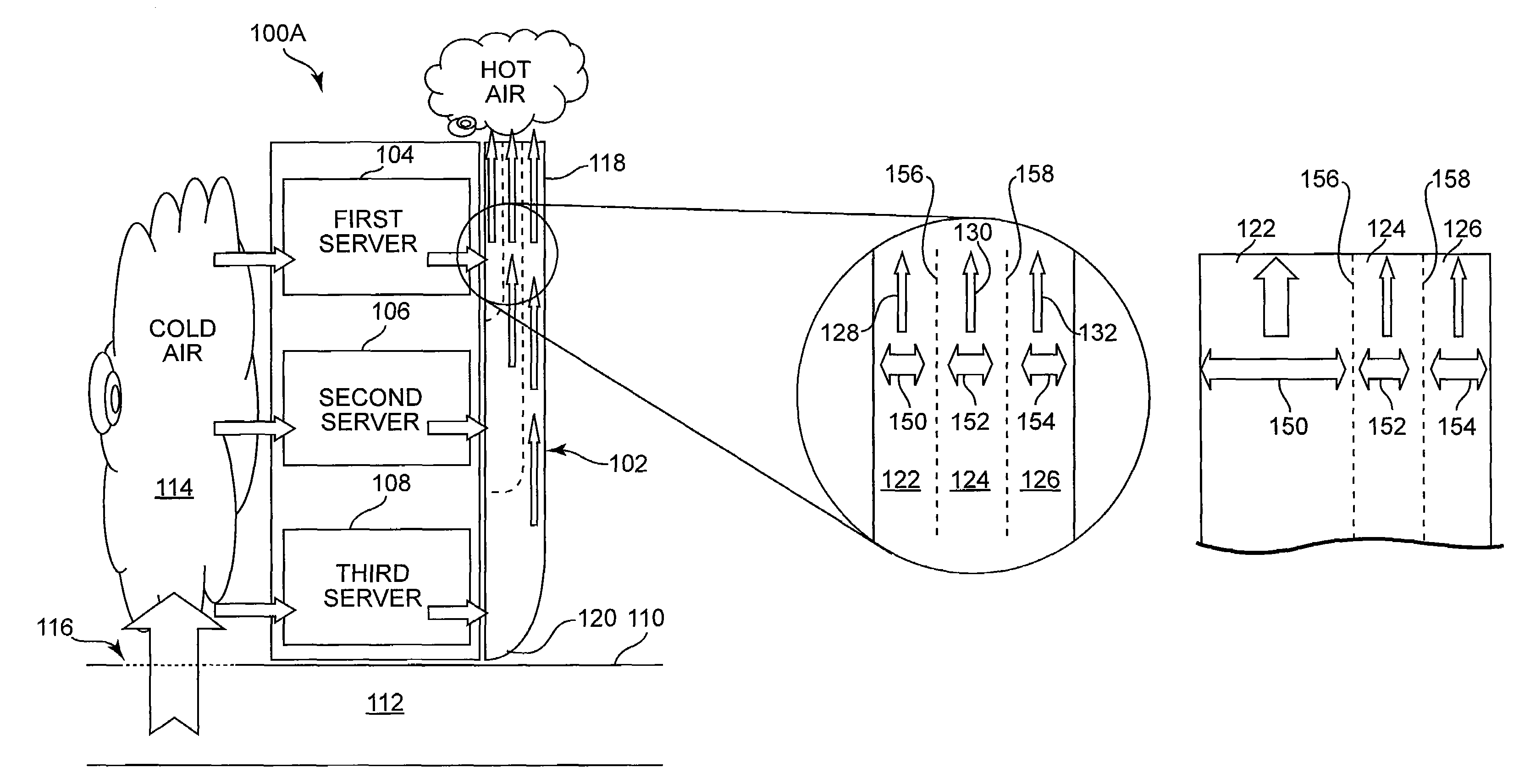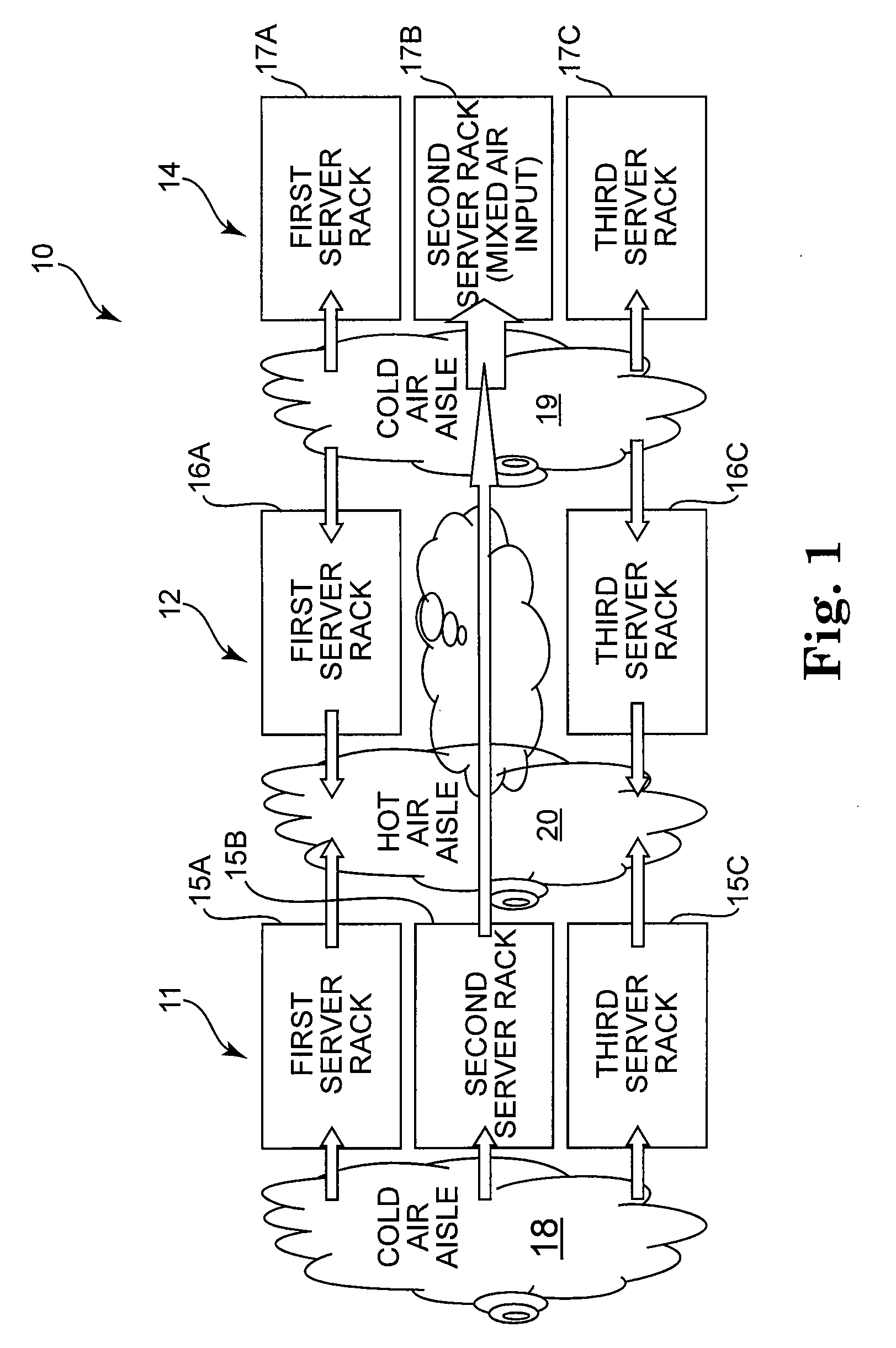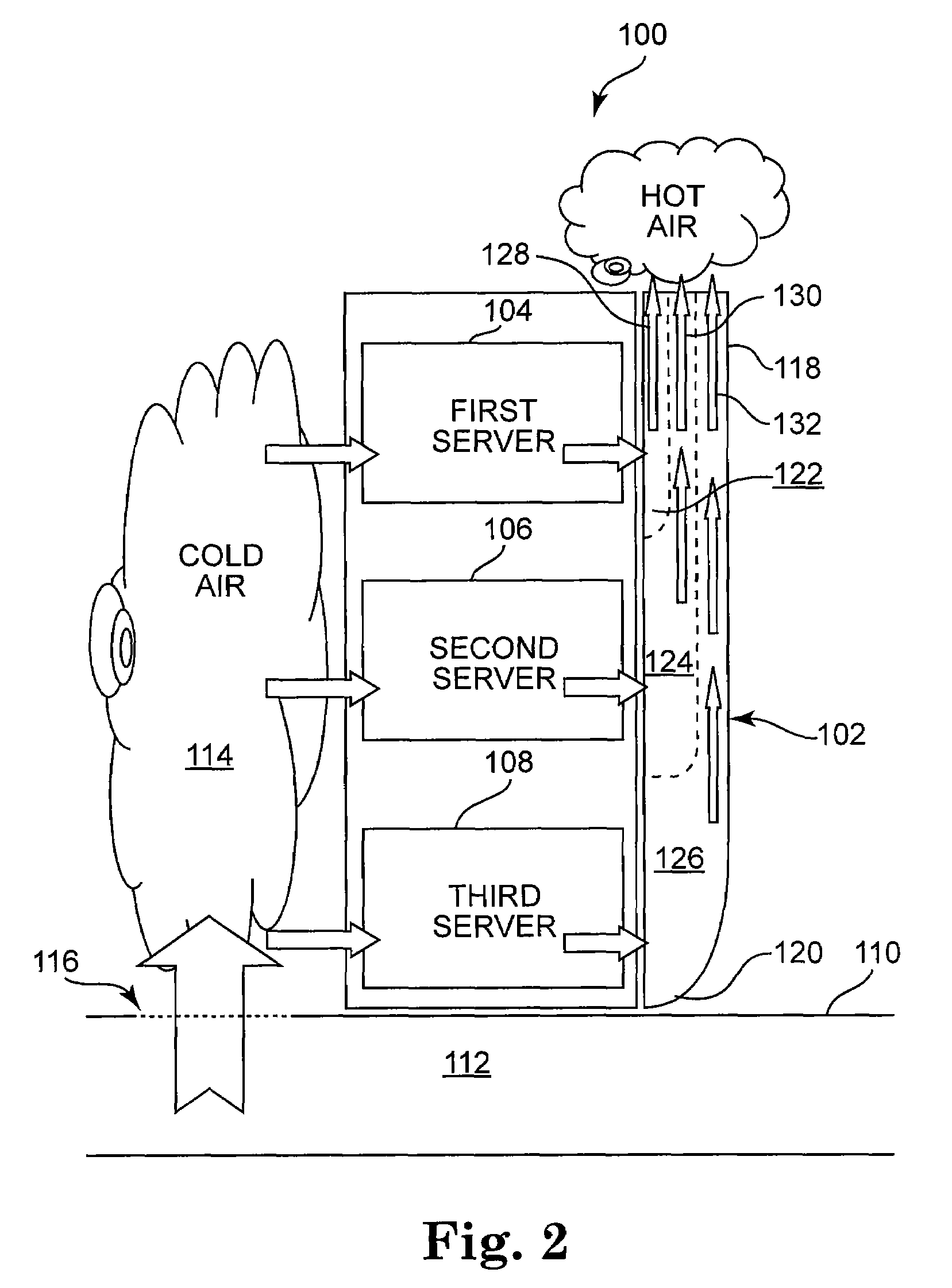Passive rear door for controlled hot air exhaust
a rear door and control technology, applied in the field of heat management, can solve the problems of reducing the total amount of energy for a computing center, affecting the cooling effect of the cooling system,
- Summary
- Abstract
- Description
- Claims
- Application Information
AI Technical Summary
Problems solved by technology
Method used
Image
Examples
Embodiment Construction
[0011]The present invention will be described in detail with reference to the figures below. However, generally speaking, the present invention encompasses a system and method for controlling the cooling air flow through a server rack. In particular, the present invention involves controlling the direction of hot air exiting a server rack with a configurable air exhaust system. In one exemplary embodiment, the hot air may be directed from the server rack toward air condition inlets in the ceiling of the computing center.
[0012]In accordance with various aspects of the present invention, the hot air exiting the server rack may be controlled so as to increase the total energy coefficient for cooling while simultaneously avoiding any mixing of the cold supply air and the hot exhaust air. The energy coefficient for cooling may generally be defined as the amount of cooling work divided by the amount of energy required to perform the cooling operation. As those skilled in the art will appr...
PUM
 Login to View More
Login to View More Abstract
Description
Claims
Application Information
 Login to View More
Login to View More - R&D
- Intellectual Property
- Life Sciences
- Materials
- Tech Scout
- Unparalleled Data Quality
- Higher Quality Content
- 60% Fewer Hallucinations
Browse by: Latest US Patents, China's latest patents, Technical Efficacy Thesaurus, Application Domain, Technology Topic, Popular Technical Reports.
© 2025 PatSnap. All rights reserved.Legal|Privacy policy|Modern Slavery Act Transparency Statement|Sitemap|About US| Contact US: help@patsnap.com



